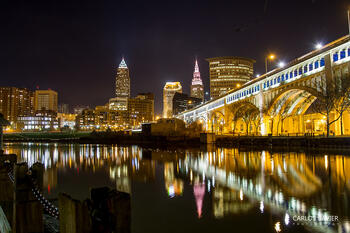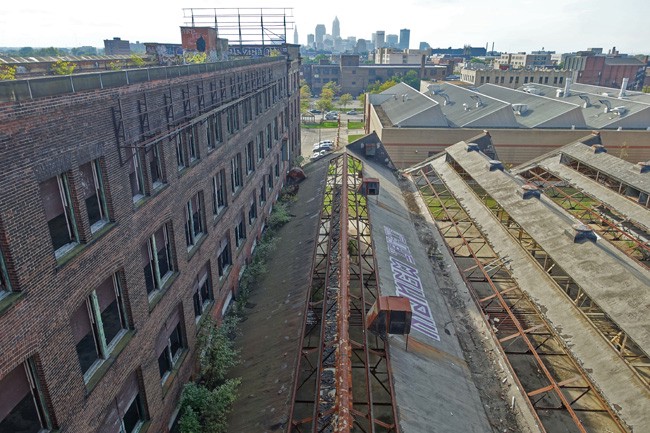
What’s global becomes local. What do I mean by that? Nothing that complicated. Check the graph below. It charts economic restructuring, or Cleveland’s evolution from a primarily manufacturing- to knowledge-based economy. Largely, that means healthcare. But not exclusively. Other knowledge-based service jobs that are prevalent locally include legal, finance, and management.

How people work is related to where people work. Inner-city factories, for instance, were the workhorses of the “old” Cleveland. But things changed. This was not only due to the automation of manufacturing jobs, but also to the decentralization of those jobs. This job sprawl initially went to the Cleveland suburbs, then the Sun Belt, and eventually overseas. Left in the wake are brick, big-box skeletons. Ruin porn. Places for “urban spelunking”. Take the image below. The vacant Warner and Swasey building sits near Downtown Cleveland. It was a high-end machine shop that was built in the late 1800’s. It made telescopes and machine lathes, and it supplied arms for world wars. Then deindustrialization happened. It did so globally. This was pockmarked as abandonment locally.

Source: Places that were
Not a few miles up the road, however, is the brand-new Cleveland Clinic and Case Western Reserve University medical school. It’s an architectural marvel that brims with relevance, talent, and cutting-edge, body-repair techniques. The rise of Cleveland’s healthcare industry from a local service to the global marketplace is conveyed visually: the intersection a portal to another time and place. To reiterate, what’s global becomes local.
But we can keep going, because what’s local becomes personal.
As detailed in Part 2 of this series, as regional economies, like Cleveland’s, evolve from labor- to knowledge-based, they do so at a cost. This cost has been termed the “bifurcation” of the labor market. MIT’s David Autor recently showed that much of the working class didn’t “graduate” into knowledge economy work, but instead became subsistent on lower-wage service work. A “barbelling” of the labor market thus ensued, with knowledge workers on one end and service workers on the other.
Read the rest of this piece at RicheyPiiparinen.Medium.com.
Richey Piiparinen studies the life of Rust Belt cities at Cleveland State. Co-Founder, Rust Belt Analytica. Director, “Life After Rust”. Husband, father, Clevelander.
Photo credit: Carlos Javeir via Flickr under CC 2.0 License.













white collar
What sort of work is included in the "and Social Assistance" part of the upward job arc?